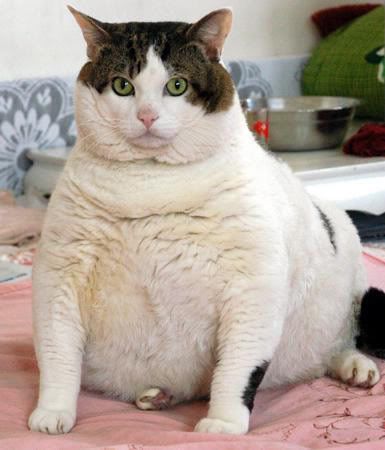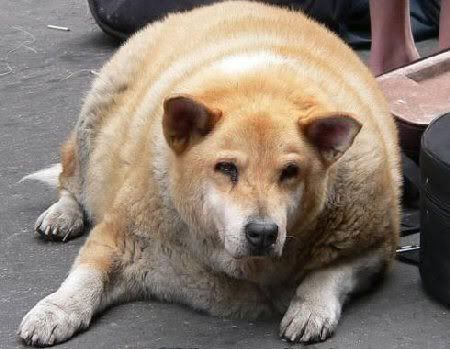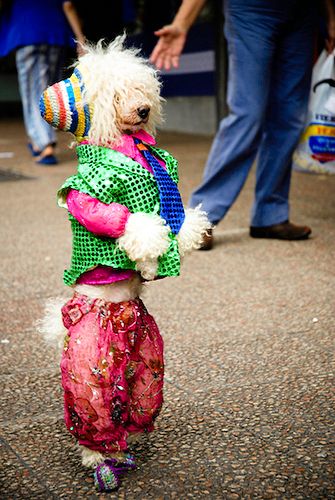
Above: Fat cat photo by Yukariryu.
Those of you who have been following me for a while know that I’ve written a few pieces on pet obesity over the years. In fact, my syndicated pet newsletter shares some information that most people have not heard about.
In January I covered the following topics:
- Pet Weight iPhone Application
- How to get a pet to eat
- Canine Fitness Coach?
- How to deal with pet begging
- Pet Obesity Drugs
- Feeding Tips
- Pet Obesity
- What is the best food to feed your pet?
You might like to see this:
Here is an excerpt from that post (but check out some of the links there)
How do you tell if your pet is a healthy weight?
* Ribs are easily felt
* Pet has firm abdomen
* Waist can be seen when viewed from above
How do you tell if your pet is overweight?
* Difficult to feel pets ribs under fat
* Pet has sagging stomach
* Pet has a broad, flat back
* Pet lacks a waist
Are You Killing Your Pet?

Above: Pet Obesity is a HUGE problem.
This time of year people are thinking about New Year resolutions–those promises of change that may or may not happen.
One of the most common resolutions is for weight loss and fitness so I thought I would ask you–are you killing your pet?
You might be.
Many pets gain extra weight during the holidays right along with their owners according to a pet obesity study.
One of the things people do is overfeed their pets even beyond the holidays.
For instance, I had one client whose diabetic dog was on a strict diet–but she kept giving her lots of treats–which defeated the purpose and kept the dog fat.
It eventually killed the dog.
Now this might sound awful but most people I meet make the same mistake.
Right now I have a client that moved her dogs onto a better food–she should be feeding less but instead she is feeding the same amount and her dogs are plumping up as a result.
People don’t think treats count and people don’t adjust their pet’s diet when they change the main diet–both actions create problems.
Just check out this announcement from the study conducted by the Association for Pet Obesity Prevention (APOP) headed up by veterinarian Dr. Ernie Ward:
The National Pet Obesity Awareness Day study (October 2007) found 43% of all dogs and 53% of all cats were classified as overweight or obese by a veterinary health care provider; 10% of all dogs and 19% of all cats were classified as obese.

Above: Fat cat photo by Yukariryu.
The problem is that urban animals are also not getting enough exercise to justify the caloric intake.
Free feeding is not a good option for many animals either.
How do you tell if your pet is a healthy weight?
- Ribs are easily felt
- Pet has firm abdomen
- Waist can be seen when viewed from above
How do you tell if your pet is overweight?
- Difficult to feel pets ribs under fat
- Pet has sagging stomach
- Pet has a broad, flat back
- Pet lacks a waist


